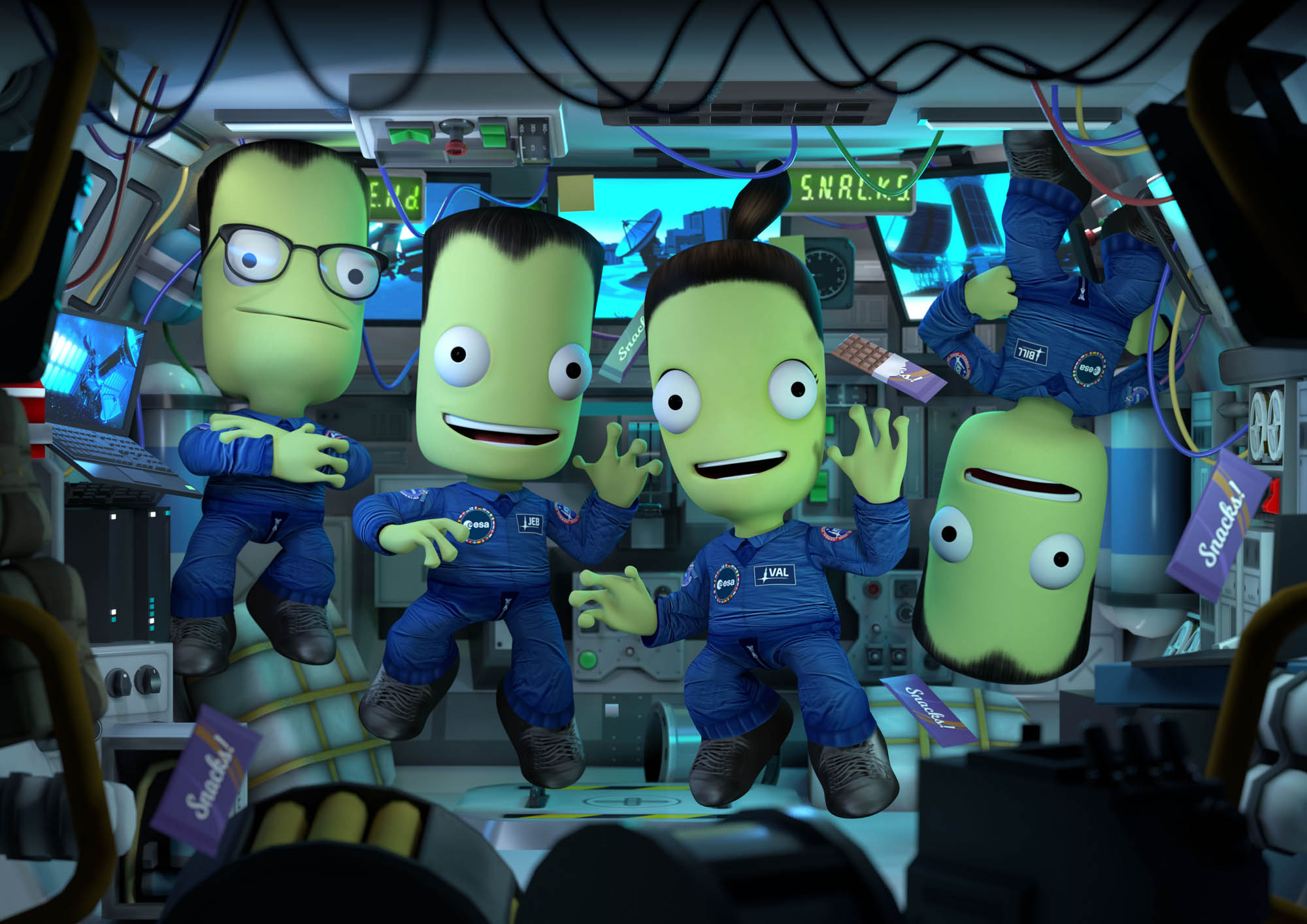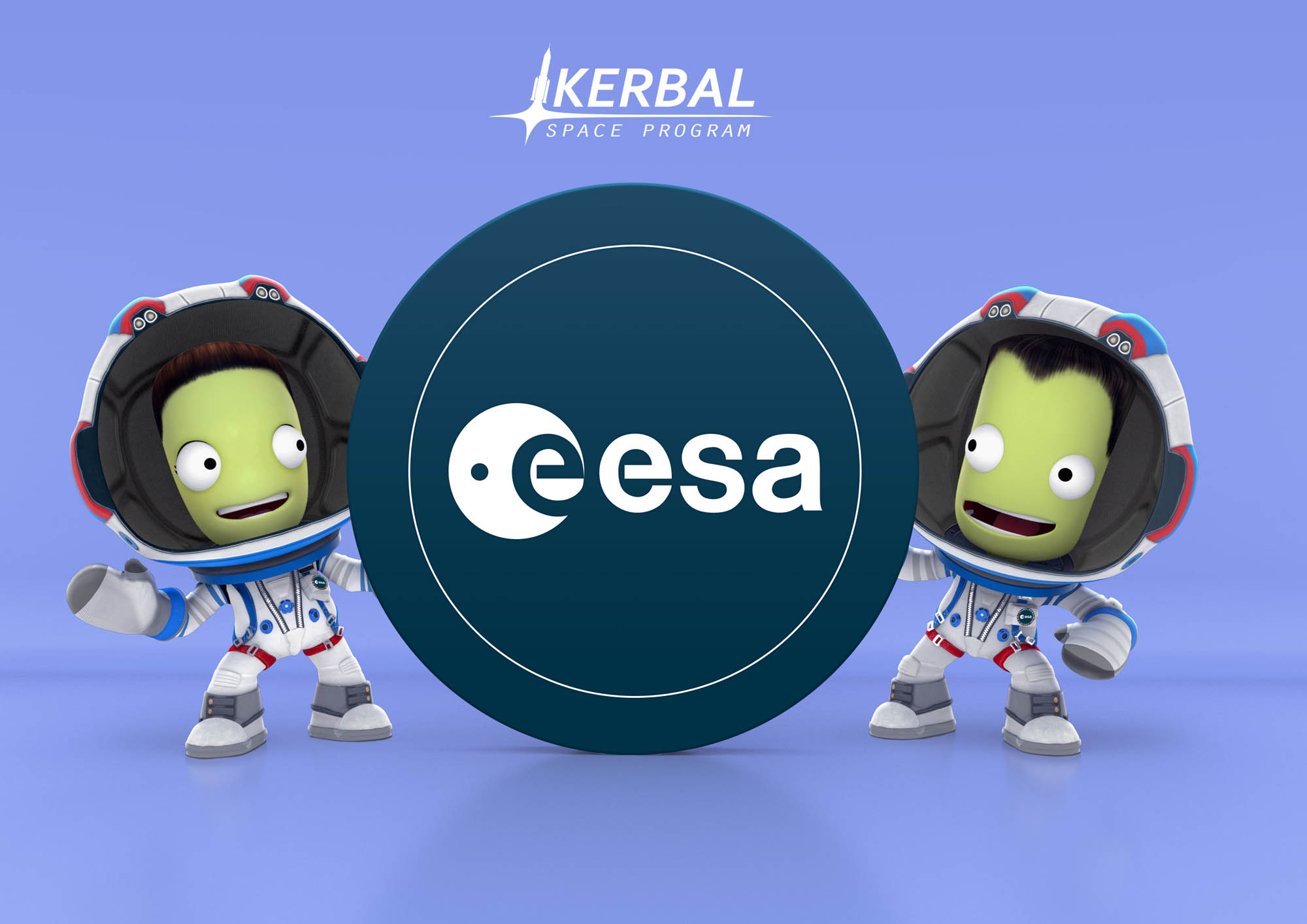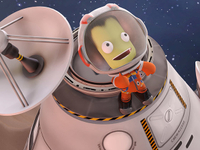'Kerbal Space Program' teams up with European Space Agency for 'Shared Horizons' expansion
KSP players can recreate ESA missions for free starting July 1.

The European Space Agency is joining the "Kerbal Space Program."
Space gamers and die-hard "Kerbal Space Program" fans will soon be able to recreate some of the biggest missions from the European Space Agency (ESA) in the free update "Shared Horizons" from developers Private Division and Squad.
The update, which launches July 1, requires the base game and will add ESA's workhorse Ariane 5 rocket, BepiColombo mission to Mercury and Rosetta comet mission to the roster of missions Kerbal players can try in the popular space simulator game. There'll also be an ESA spacesuit for the game's intrepid Kerbals to wear, new rocket components and science experiments to pursue.
Kerbal Space Program | $36.79 (Save 8%)
Recreate SpaceX's Demo-2 or just watch your creations explode in the pursuit of the Mun and beyond in this space exploration game.
"Here at the European Space Agency, many of our engineers and scientists are very familiar with KSP," ESA Director of Science Günther Hasinger said in a statement. "Both Rosetta and BepiColombo are highly complex missions that have specific challenges; however, each prove to be very rewarding for ESA and the global scientific community. Because of this, I am very happy that these ground-breaking science missions can be experienced on Kerbin as well as on Earth."
Kerbin is the Earth analogue that Kerbals launch into space from in "Kerbal Space Program." The game's Mercury equivalent is Moho, while the moon is simply Mun.
"We are excited to partner with the ESA to bring their actual missions and spacecraft to Kerbal Space Program for the first time," Private Division executive producer Michael Cook said in the statement. "It is an honor to work hand-in-hand with such a world-class space organization, and we cannot wait for fans to experience these monumental missions with the Shared Horizons update."

ESA's Rosetta comet mission launched in 2004 and visited Comet 67P/Churyumov–Gerasimenko. Rosetta dropped the lander Philae on the comet and spent nearly two years studying the icy wanderer before intentionally crashing into the surface.
The BepiColombo mission, meanwhile, is a partnership between ESA and the Japan Aerospace Exploration Agency to explore Mercury with a pair of spacecraft: the Mercury Planetary Orbiter and the Mercury Magnetospheric Orbiter. That mission launched in 2018 and will arrive in orbit at Mercury in 2025. BepiColombo's mission is tricky because it includes nine planetary flybys: one of Earth (which occurred April 10), two of Venus and six of Mercury itself.
Get the Space.com Newsletter
Breaking space news, the latest updates on rocket launches, skywatching events and more!
"Shared Horizons" isn't the first time that "Kerbal Space Program" has incorporated real-life space exploration into its gameplay. The game's "Making History" expansion in 2018 allowed players to recreate iconic missions from space history, while its "Breaking Ground" expansion added planetary rovers and other surface exploration features to the mix.
"Kerbal Space Program has already been an inspiration for an entire generation of future engineers and scientists, so introducing this level of realism will really take it to the next level," ESA Director of Space Transportation Daniel Neuenschwander, said in a statement. "I really look forward to seeing the innovative ways in which players will approach designing their new space transportation services."
Last week, Private Division and NASA challenged "Kerbal Space Program" players to recreate SpaceX's upcoming Demo-2 Crew Dragon launch and submit entries on social media using the hashtag #LaunchAmerica. Demo-2 is SpaceX's first astronaut launch on a Crew Dragon and will mark the first U.S. crewed orbital spaceflight from American soil since NASA's space shuttles were retired in 2011.
Private Division is currently developing a sequel to the physics-based space simulator. That game, "Kerbal Space Program 2," will include wild technologies for interplanetary travel and is expected to launch in 2021.
- In photos: SpaceX's amazing Crew Dragon in-flight abort test launch
- Take a wild ride with SpaceX in this 'emergency egress' test
- SpaceX Crew Dragon arrives at launch site for historic Demo-2 flight
Email Tariq Malik at tmalik@space.com or follow him @tariqjmalik. Follow us @Spacedotcom, Facebook and Instagram.
OFFER: Save 45% on 'All About Space' 'How it Works' and 'All About History'!
For a limited time, you can take out a digital subscription to any of our best-selling science magazines for just $2.38 per month, or 45% off the standard price for the first three months.
Join our Space Forums to keep talking space on the latest missions, night sky and more! And if you have a news tip, correction or comment, let us know at: community@space.com.

Tariq is the Editor-in-Chief of Space.com and joined the team in 2001, first as an intern and staff writer, and later as an editor. He covers human spaceflight, exploration and space science, as well as skywatching and entertainment. He became Space.com's Managing Editor in 2009 and Editor-in-Chief in 2019. Before joining Space.com, Tariq was a staff reporter for The Los Angeles Times covering education and city beats in La Habra, Fullerton and Huntington Beach. In October 2022, Tariq received the Harry Kolcum Award for excellence in space reporting from the National Space Club Florida Committee. He is also an Eagle Scout (yes, he has the Space Exploration merit badge) and went to Space Camp four times as a kid and a fifth time as an adult. He has journalism degrees from the University of Southern California and New York University. You can find Tariq at Space.com and as the co-host to the This Week In Space podcast with space historian Rod Pyle on the TWiT network. To see his latest project, you can follow Tariq on Twitter @tariqjmalik.











